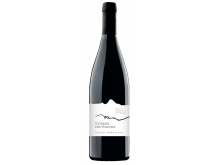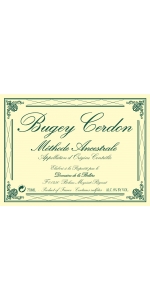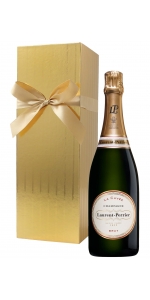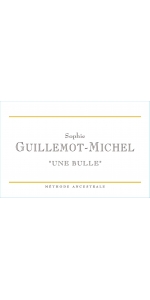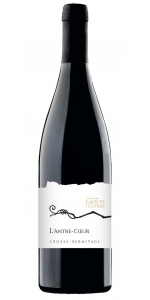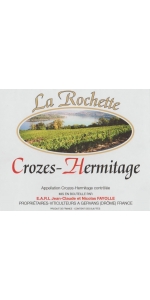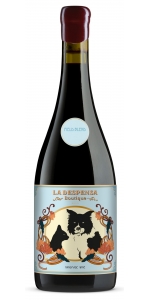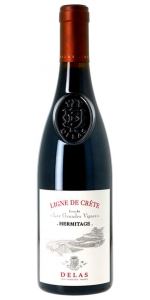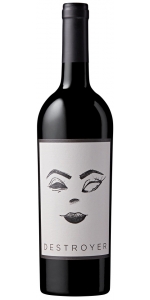Laurent Veyrat Crozes Hermitage l'ivresse des Voleyses 2020
6 bottles with free shipping for: $300.00
12 bottles with free shipping for: $540.00
| BUY MORE! SAVE MORE! | ||||||||||||||||||||
|
| Country: | France |
| Region: | Rhone |
| Winery: | Laurent Veyrat |
| Grape Type: | Syrah |
| Organic: | Yes |
| Vintage: | 2020 |
| Bottle Size: | 750 ml |
Laurent Veyrat Crozes Hermitage l'ivresse des Voleyses is made from 100% Syrah.
Review:
"Slightly more expensive, the 2020 Crozes-Hermitage L’Ivresse Des Voleyses is similarly purple-hued and has a great nose of ripe red and blue fruits interwoven with plenty of pepper, flowery incense, and spicy nuances. It’s pure, meduim-bodied, and beautifully balanced, with integrated acidity and outstanding length. It’s very much in the style of this classic, balanced vintage and is going to have over a decade of longevity."
-Jeb Dunnuck (2022), 91-93 points
Beneath the rugged Vercors mountain range is Domaine Laurent Veyrat. A family-owned, organic farm whose deep, vibrant narrative began in 1600 AD. The vineyards reside in the Crozes-Hermitage appellation located along the eastern banks of the Rhône River. The nature of the climate is continental, meaning warm summers, cold winters and mild rainfall. Early in the growing season, Le Mistral, a strong, violent cold wind will push through the valley, leaving clear fresh weather in its wake, ensuring no moisture on the vine's leaves.
The terroir's soil is layers of porous granite, clay, limestone and loess (sedimentary silt deposited by wind.)
The landscape includes 11 parcels of diverse vine plantings spanning 36 acres alongside flourishing fruit trees of apricot, pears and peaches and grain fields. A farm carefully tended to generation after generation with a long history of winemaking that captures the freshness of the Mediterranean climate, with a style that boasts of medium-bodied balance and characteristics that offer a pure reflection of Northern Rhone's reputable terroir.
Beliere Bugey-Cerdon is made from 95% Gamay, 5% Poulsard (a local grape from Jura).
Spontaneous fermentation. An altogether preferable scenario to spontaneous combustion, and A LOT more fun to drink. This pink, semi-dry bubbly was made by spontaneous fermentation, otherwise known as methode ancestrale. Grapes are picked by hand (not just any grapes, these are the local Poulsard and Gamay grown on mountainous slopes in the shadow of the Alps), and fermented in chilled vats just reaching 5 or 6 degrees alcohol. The young and light wine is then bottled, along with its active yeast and considerable unfermented sugars. Under pressure of the cork, the wine continues to ferment, gaining a few degrees of alcohol but retaining a nice amount of sweetness. The bubbles, of course, are another result of fermentation under pressure. This one is so delicious and fun to drink, with a distinctly, well, grapy aroma and a fruitiness that calls out for celebration and jubilation.
This is also wonderful served with chocolate cake!
8% ABV.
Produced from the "Ancestral method" (also used to produce Clairette de Die): Low temperature fermentation starting in the tank, light filtration that leaves active yeast in the wine, bottling of the wine with fermentation continuing in the bottle ("spontaneous fermentation in the bottle"), retaining some sugar (40 gr/liter at the end). Made from 95% Gamay, 5% Poulsard (a local grape from Jura).
Review:
"Amber color. Aromas and flavors of cranberry juice, rose petal, cherry and kiwi, and red apple with a round, bright, effervescent, fruity medium-to-full body and a delightful, medium-long finish that shows nuances of cherry, cranberry, beeswax, and rose water. Concentrated fruit flavors, creamy bubbles, and well balanced acidity will make this a splendid pairing with charcuterie." - Beverage Testing -Institute (November 2022), 92 pts - Gold Medal
Wine Gift Set Includes:
- Laurent-Perrier La Cuvee Brut
The wine comes from the purest grape juice and it alone allows Laurent-Perrier to craft 'La Cuvée', a champagne of great finesse and a beautiful freshness obtained after a long ageing process in our cellars.Pale gold in color. Fine bubbles feed a persistent mousse. A delicate nose with hints of fresh citrus and white flowers. The wine’s complexity is expressed in successive notes like vine peach and white fruits notes. A perfect balance between freshness and delicacy with fruity flavors very present on the finish. This fresh and pure wine is perfect for an apéritif. Its citrus and white fruits notes and its remarkable balance supported by a subtle effervescence, make it an ideal accompaniment to poultry and the finest fish.
Gold Gift Box
Review:
"The brioche and cooked-apple and cream character really comes through here. Full-bodied and round with fine bubbles. Flavorful and intense. Vivid, bread-dough finish. This is four years on lees. 55% Chardonnay and the rest Pinot."
- James Suckling 93 Points
Guillemot-Michel Une Bulle is made from 100% Chardonnay.
This cuvée was created originally to celebrate the wedding of daughter Sophie Guillemot and Gautier!
The Chardonnay grapes come from a historic parcel of the estate - La Lie-Monin - that had been leased for nearly 30 years and that the family decided to cultivate again in 2013 following up a change of viticulture practice (towards organic) from their main neighbor.
"Bulle" is produced with the "methode ancestrale" - meaning only natural sugars are used from grapes that are harvested at optimum maturity, being less acidic and more aromatic, giving a beautiful fresh and elegant sparkling wine of crisp and juicy flavors, firm acidity and a long finish.
White meat, dessert, fruits, mild cheese, delicious on its own
Review:
"Bursting with aromas of apples, pears, almonds, warm bread and dried fruits, the 2019 Méthode Ancestrale Une Bulle is medium to full-bodied, fleshy and concentrated, with lively acids and a pillowy mousse. It's a touch drier than its 2018 counterpart. - William Kelley"
- Robert Parker's Wine Advocate (August 2021), 92 pts
Laurent Veyrat l'Antre Coeur Crozes-Hermitage is made from 100 percent Syrah.
Big, gamey, meatiness with white pepper and green olive demonstrating intense notes of red fruits, blackcurrant, raspberry, and strawberry.
Review:
"The 2020 Crozes-Hermitage L’Antre Coeur is a big, meaty, peppery effort that brings serious character. Medium-bodied and juicy on the palate, with ripe, nicely integrated tannins and good overall balance, it’s for those who like the wilder side to Syrah!"
-Jeb Dunnuck (2022), 90-92 Points
Fayolle Crozes-Hermitage Rouge La Rochette is made from 25-year-old vines planted on loess and red granitic soils. 100% Syrah.
Deep ruby red color.
The wine has plenty to offer with red and black fruit aromas, as well as a good minerality.
The finish is long, clean and juicy and offers some white pepper spiciness typical of the best Crozes-Hermitage.
Soil type is red brittle granite and white soil.
Hand harvested in small crates. The grapes are then pumped into tanks (full cluster, not destemmed).
It will stay in this tank for 15 days for the skin contact maceration and the Alcoholic fermentation.
They will also use the "rack and return" technique (delestage).
Then the wine is transfered into neutral French Oak barrels where the wine will complete the Malo-Lactic fermentation.
Fayolle Crozes-Hermitage Rouge La Rochette is made from 25-year-old vines planted on loess and red granitic soils. 100% Syrah.
Deep ruby red color.
The wine has plenty to offer with red and black fruit aromas, as well as a good minerality.
The finish is long, clean and juicy and offers some white pepper spiciness typical of the best Crozes-Hermitage.
Soil type is red brittle granite and white soil.
Hand harvested in small crates. The grapes are then pumped into tanks (full cluster, not destemmed).
It will stay in this tank for 15 days for the skin contact maceration and the Alcoholic fermentation.
They will also use the "rack and return" technique (delestage).
Then the wine is transfered into neutral French Oak barrels where the wine will complete the Malo-Lactic fermentation.
La Despensa Boutique Field Blend is made from 45% Grenache, 35% Syrah, 15% Mourvedre and 5% Roussanne.
This is La Despensa's flagship Rhône-blend, produced from grapes from their own, organic vineyard in Colchagua. Their passion is to produce very high-quality grapes - it’s the vineyard work that they love the most. So this blend is always a little different year after year, as they make whatever the vineyard gives them. In 2020 they incorporated a little Roussanne to the blend, which adds some mouthfeel and a tiny background note of tropical fruit, to accompany the fresh fruit and structure that the other varieties bring out.
Review:
"A very vivid and bright nose with lots of red fruit and flowers. Some sweet currants, raspberries and pomegranate in the forefront followed by a nice touch of bay leaf, graphite and flowers. Juicy and bright on the palate with a medium body and firm and fresh tannins. Very drinkable. 45% grenache, 35% syrah, 15% mourvedre and 5% roussanne. Co-fermented. Enjoy now."
- James Suckling (February 2023), 92 pts
Delas Hermitage Les Grandes Vignes Ligne de Crete is made from Syrah.
The nose discloses aromas of spice and leather intertwined with deep berry aromas (blackberry, redcurrant) and heady floral notes, liquorice and incense. Its richness, complexity and elegance are by no means a contradiction. The finest granite soils of the Hermitage hillside are to thank for this wine's incredible minerality and finesse. The wine is rich and dense on entry to the palate, where it shows an elegant, broad and flavorsome character. The ripe, smooth and well-integrated tannins contribute to the wine's powerful yet harmonious structure. The palate reveals the same aromas as those found on the nose with nuances of blueberry, raspberry, violet and bitter chocolate. Ligne de Crête is characterized by its exceptional structure, harmony and balance.
This remarkably smooth and elegant wine makes the perfect partner for a pigeon pie, beef tartare ravioli or a roast fillet of deviled duckling with cranberries. It also makes an excellent choice for woodcock, hare "à la Royale" or even a roast rack of lamb in a herb crust.
Review:
Whiffs of espresso, ore and charred meat mingle into thunderous flavors of crème de cassis and roasted plums in this wine. A single-site expression of Les Grandes Vignes from a ripe yet fresh vintage, it's a showstopping Syrah marked with a creamy texture and ripe tannins. Hermitage is not known for youthful pleasures but this rare bottling embraces the hedonism of adolescence along with its potential to gain power and complexity far beyond 2050. Anna Lee C. Iijima
-Wine Enthusiast 97 Points
Inky ruby color. Expansive, smoke- and mineral-accented black and blue fruits, licorice, smoky bacon, mocha, violet and licorice on the highly perfumed nose. Appealingly sweet, mineral-accented cassis, boysenberry, fruitcake, floral pastille and vanilla flavors show superb depth and become spicier with aeration. Shows superb detail and mineral lift on the youthfully tannic, extremely persistent and incisive finish, which features resonating floral and exotic spice notes.
-Vinous 97 Points
Destroyer North Coast Red is made from 65% Cabernet Sauvignon 20% Merlot 10% Zinfandel 5% Syrah
DESTROYER Red Wine Blend is a whimsical blend of North Coast varieties. We start with Cabernet Sauvignon 65%, and then add Merlot 20%, Zinfandel 10% and finish with Syrah 5%. 65% is grown in Lake County in the Red Hills AVA, the balance is Napa Valley. This wine is aged in French oak for 10 months.
DESTROYER is rich and flavorful. Red and dark fruits are apparent in the nose with Plum, Cherry and Blueberry tones. The aroma is elegant and shows subtle signs of oak nuance. The pallet explodes with deep deliciousness! The finish lingers and invites a second glass or two. Invite your favorite friends to try, and share with your hottest date.
- back
Morlet Family Vineyards La Proportion Doree is made from made from Sémillon (65%), Sauvignon Blanc (33%) and Muscadelle (2%).
A harmonious blend of the three classic white Bordeaux varietals grown in the Golden State’s Sonoma County, this unique cuvée was handcrafted using classical winemaking techniques inspired from Pessac-Léognan. As in architectural arts, it is ‘The Golden Ratio’ or ‘La Proportion Dorée.’ Bright yellow. Intense bouquet of candied lemon, muscat, and honeysuckle flavors intermixed with sweet notes of ripened apricot and fresh quince. Full-bodied, seamless, refined and complex.
Review:
Luc Morlet has 100 Muscadelle vines, planted in 1953, which he co-ferments with the Sauvignon Blanc to produce this Semillon-based wine. Composed of 69% Semillon, 30% Sauvignon Blanc, and 1% Muscadelle, the 2020 Proportion Doree is a tad closed - it was only bottled in March this year. It soon reveals notes of ripe peaches, gooseberries, and white currants, with hints of white pepper, coriander seed, and oyster shell. Full-bodied, the palate is wonderfully viscous and racy with intense citrus and apple flavors, finishing long and chalky. 800 cases were made.
-Wine Independent 98 Points
Opus One 2022 is made from 80% Cabernet Sauvignon, 8% Petit Verdot, 6.5% Cabernet Franc, 5% Merlot, 0.5% Malbec
Opus One 2022 exudes charm and sophistication from the glass. Primary aromas of blueberry, cassis, and dried rose petals with underlying notes of olive, cigar box, and graphite create a rich and inviting bouquet. On the palate, bright red-fruit flavors, cocoa, and fresh orange peel waltz together into a harmonious and balanced profile. Long and elegant, the finish delivers touches of wet stone, vanilla, and a hint of coffee. Fine-grained tannins and juicy ripeness signal the promise of a long future in the cellar.
Review:
Chocolate, cherry and rose petal aromas on the nose. Very open and alive - this has a great energy from the aromatics alone with soft cedar shavings, vanilla bean and bramble fruit. Juicy and lively, this is full of fun - fruity and concentrated. The tannins are just wonderful, creamy and slightly grippy, extending the flavours vertically. Tons of juicy, succulent fruit - this feels quite modern but still with that flash of sunshine and ripeness. Long lasting with purity and delicacy that make it so enjoyable. A wonderful creation from Michael Silacci. This is not your typical blockbuster at all, this is a darling of a wine. 0.5% Malbec completes the blend. The Opus team chose to pick early and quickly given the heat spikes in 2022, starting with the Merlot on 24th August. Ageing 18 months in French oak.
-Decanter 97 Points

